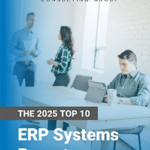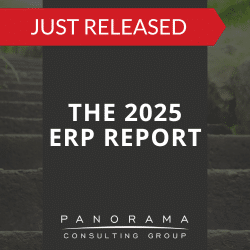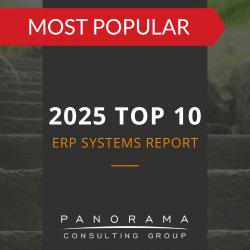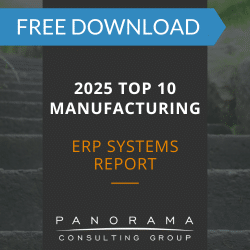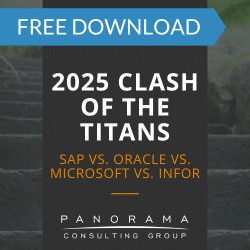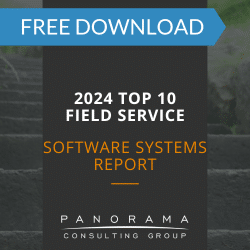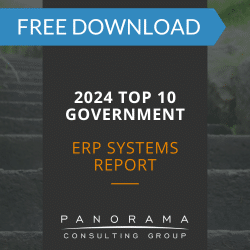- A Big Bang ERP go-live requires immediate adoption of new processes, making employee preparedness critical to avoid disruptions and costly mistakes.
- Effective change management in Big Bang ERP projects should begin early, focusing on building trust and addressing resistance.
- Immersive, role-specific training—featuring scenario-based learning, hands-on testing, and peer-led sessions—ensures employees are ready for go-live.
- A strong post-go-live support system with immediate troubleshooting, clear escalation channels, and ongoing feedback loops stabilizes operations and boosts user adoption.
A Big Bang ERP go-live is one of the most complex transitions an organization can undertake. Unlike a phased implementation, where teams gradually adapt to new processes, a Big Bang approach requires an immediate shift. This high-risk, high-reward strategy demands not only technical readiness but also employee confidence and engagement.
Employees who feel underprepared and overwhelmed can derail a Big Bang rollout by becoming disengaged and resisting necessary changes. Without a strategic focus on change management and employee training, your company may be on track for a tumultuous go-live.
Today, we’re exploring how to build employee confidence, address operational risks, and ensure effective user adoption in a Big Bang ERP project.
Change Management Case Study
The client recognized their need for more comprehensive change management, so they asked us to fill in the gaps. We developed a robust communication plan to supplement the vendor’s communication approach.
Building Trust by Focusing on Change Management
In our ERP project recovery practice, we’ve seen many implementations fraught with change resistance—more specifically, users’ fear of failure, uncertainty about new workflows, and the perception that the system is being imposed on them.
To overcome this resistance, leaders must employ proven change management tools and techniques.
Effective change management in Big Bang ERP projects begins long before training materials are distributed. Employees must first trust the transformation process.
One effective approach to building trust is identifying department-level influencers—respected employees who can serve as ERP champions.
Start by identifying employees who are respected by their peers and have a deep understanding of current workflows. These individuals should be involved early, not just as ERP champions but as honest conduits for feedback.
When employees see that their concerns are being addressed through these influencers, they will be more receptive to change.
Rethinking Employee Training for Big Bang ERP Projects
One of the biggest mistakes in a Big Bang ERP project is treating training as a one-size-fits-all crash course. Generic tutorials that focus on button clicks don’t prepare employees for the high-stakes reality of their daily responsibilities.
Effective ERP training must be immersive, role-specific, and phased over time to ensure retention. Employees learn best when they see how the ERP system changes their actual workflows, rather than just how to navigate a dashboard. The best training programs include:
- Scenario-Based Learning: Instead of simply showing how to enter a sales order, show how the entire order-to-cash process will work post-go-live. Employees should experience the system as they would in a live environment.
- Hands-On Testing in a Safe Environment: Employees should be able to practice in a sandbox system without fear of making costly mistakes. This builds confidence before the real transition.
- Peer-Led Sessions: Employees trust colleagues more than external trainers. By integrating experienced users into training, organizations create a culture of shared learning.
Preventing Burnout by Addressing Workload Pressures
In a Big Bang ERP implementation, one of the most overlooked risks is the strain it puts on employees’ workloads. With the entire system rolling out at once, employees are often expected to master new processes while maintaining full productivity. As a result, employees feel overloaded and may disengage from training or make costly errors.
Our ERP consultants always advise clients to proactively manage workloads by reallocating critical resources.
For example, our manufacturing clients often bring in temporary staff for order entry and administrative support while shifting non-essential projects to a later date. This allows core teams to focus on the ERP project and reduces the risk of burnout and severe productivity dips.
Creating a Support Structure for Post-Go-Live Stability
Without the gradual adjustment period a phased rollout provides, employees must immediately shift to new ways of working.
This high-pressure environment often reveals gaps in training, unexpected technical issues, and process inefficiencies that weren’t apparent during testing. Employees who felt confident before go-live may quickly become overwhelmed when faced with real-time customer demands and tight deadlines. Processes that seemed straightforward in controlled test environments can suddenly feel complex when there’s no margin for error.
Our organizational change management consultants often tell clients to anticipate both immediate technical challenges (such as system glitches or data migration issues) and process-related concerns (like navigating new workflows or cross-functional dependencies).
To navigate this phase successfully, organizations must build a post-go-live support system that includes:
- Hands-On Support: Employees should have immediate access to resources who can troubleshoot issues in real time. This prevents frustration and workarounds that could compromise data integrity.
- Clear Escalation Channels: Employees need to know where to go when they encounter a problem. A defined support process—whether through an internal help desk, ERP champions, or IT teams—ensures that issues are addressed quickly.
- Ongoing Feedback Loops: The first few months post-go-live will reveal unexpected roadblocks. Gathering employee feedback and making iterative improvements will help stabilize the system and improve long-term adoption.
Learn More About Preparing Employees for Go-Live
In a Big Bang ERP project, employees need more than basic instructions—they need hands-on practice and the confidence that they can perform their roles without a legacy system to fall back on.
Equally important is addressing the operational realities that come with a Big Bang approach: managing workloads to prevent burnout and ensuring that employees have accessible support after go-live.
Our change management consultants can help you focus on the human element of ERP to ensure that your technology investment translates into lasting improvements. Contact us below for an ERP consultation.
